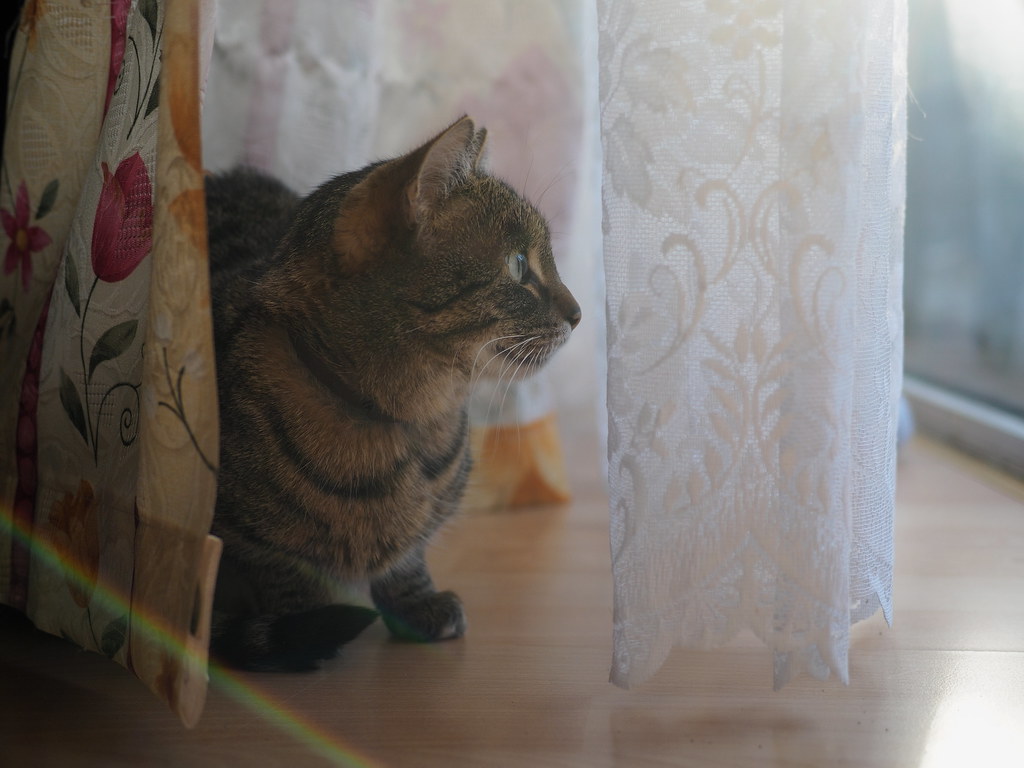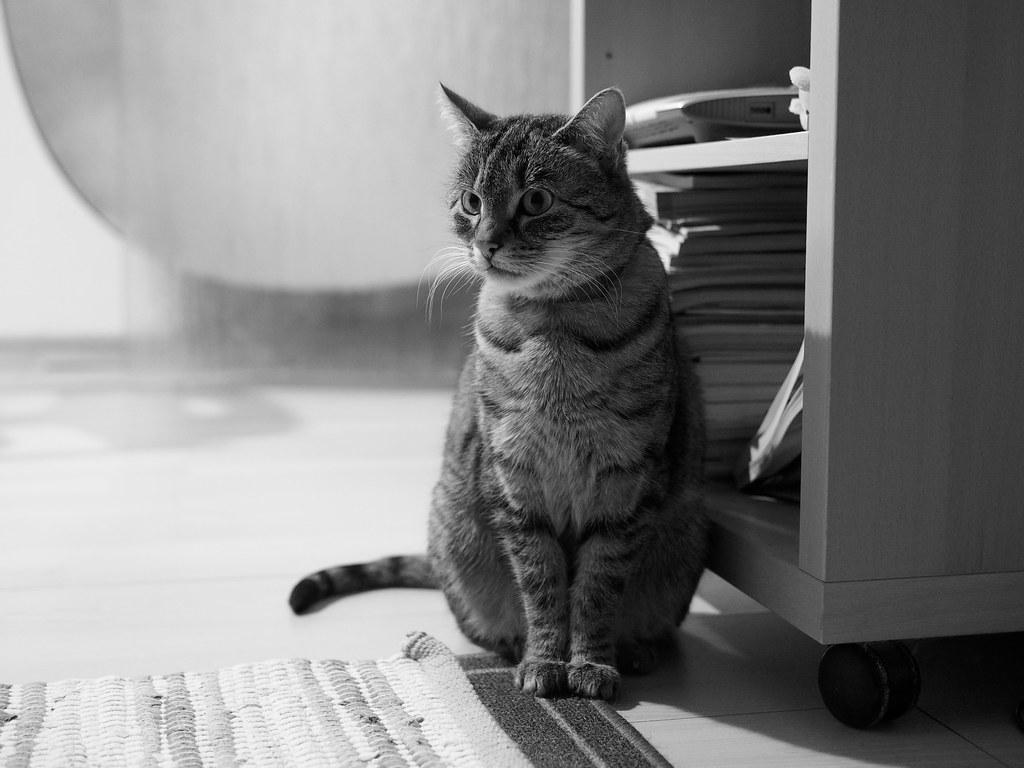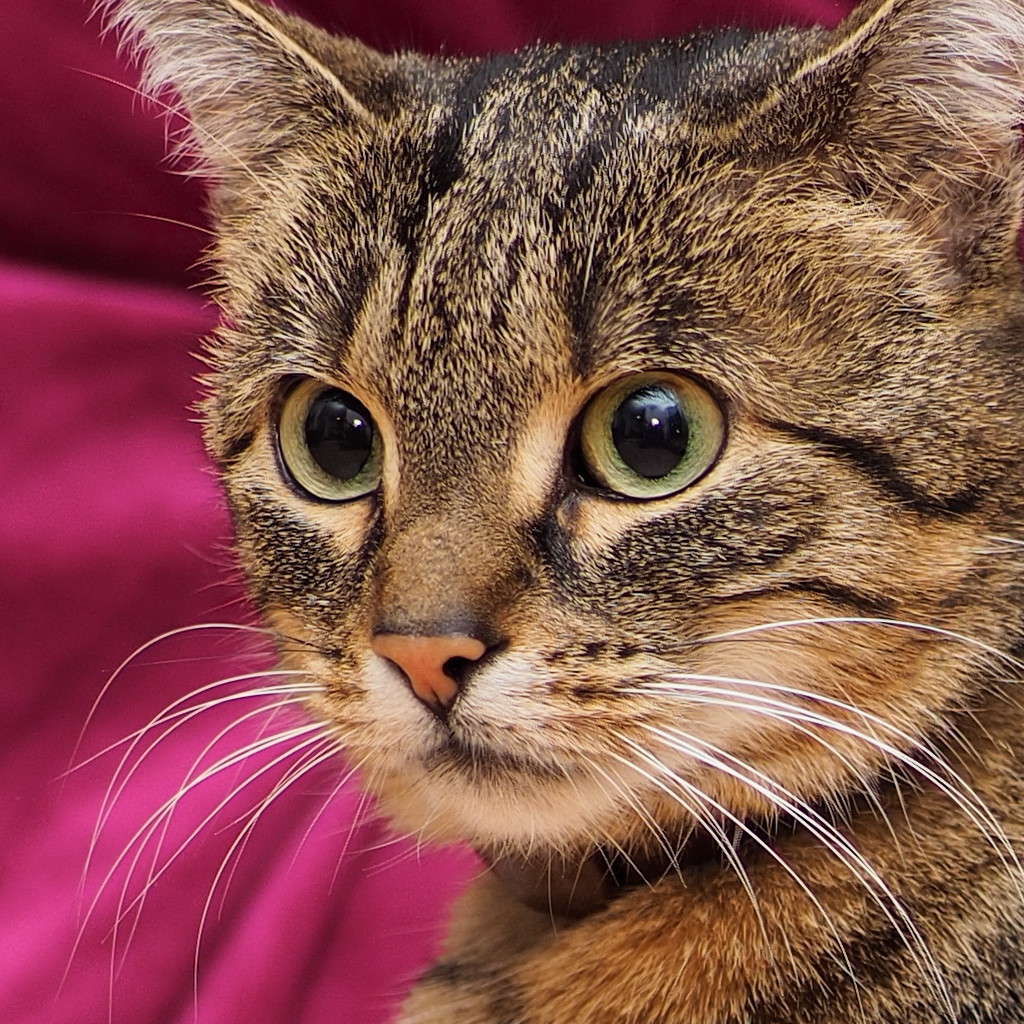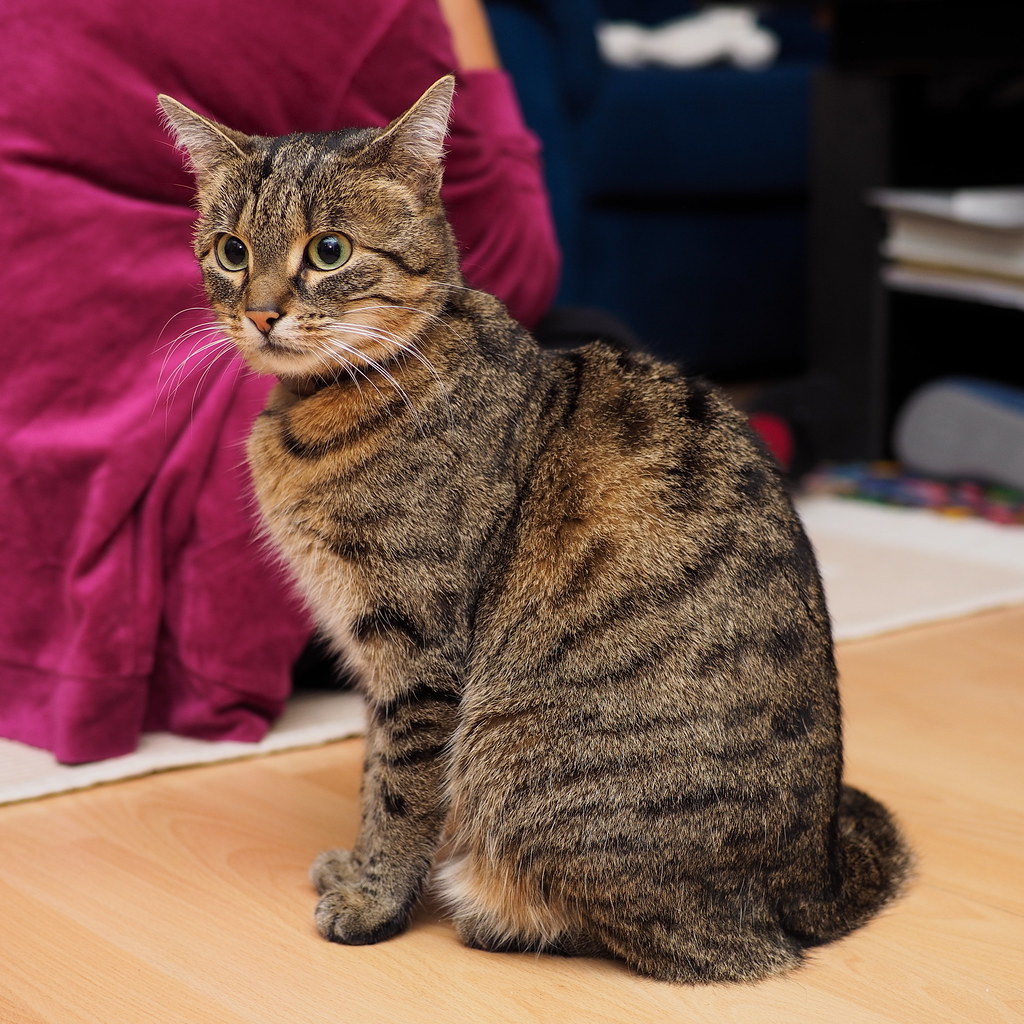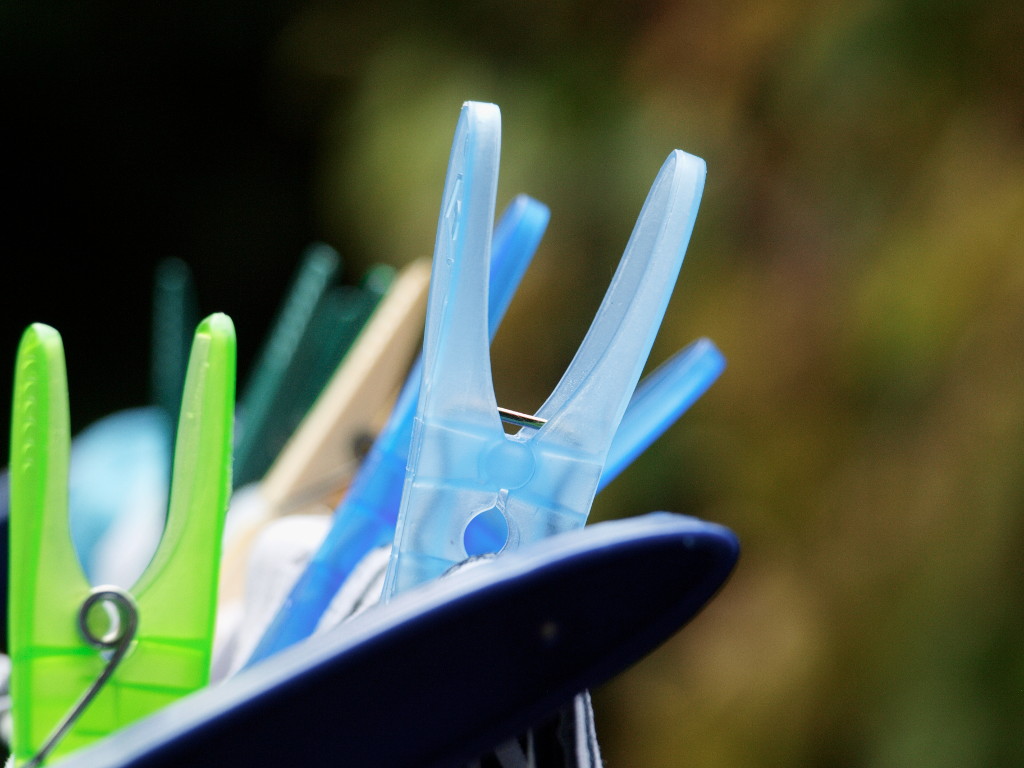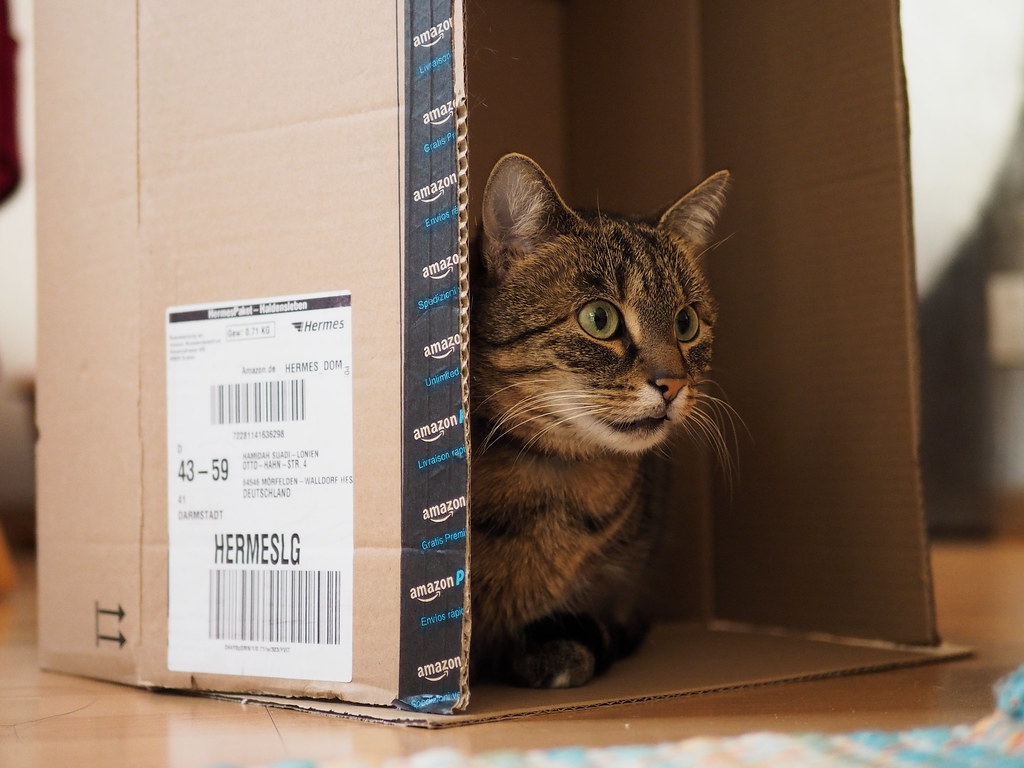The guys from “The Camera Store” (in Canada) lately had an interesting video, where they asked several people’s opinions about their preferences of standard jpg outputs of different cameras. Interesting to see, and with a maybe not so much expected “winner”.
Standard jpgs from our Olympus cameras are very nice, tho a short comparison I did last weekend showed me that in certain situations, other colour engines than the one built in (or the similar Olympus Viewer 3 software) gave me a better starting point, especially for portraits under strong and contrasty studio lights – my “winner” for these situations is Darktable under Linux.
But anyhow, I’d like to show a few snapshots from today, and tell you what I did with these, using my standard procedure (“workflow”, except that for me this ain’t work): convert to a 16 bit .tif with Olympus Viewer 3 (on a virtualized Win7 machine), then add metadata using RawTherapee 4.2 on Linux.
For today’s first picture, I was in for a surprise:
Cat, with (rainbow) lens flare
I took three photos of Tuna at that place, and my rear display on the camera is normally turned off – no “chimping” and instant reviews. So when I sat down on our sofa to show one to Mitchie, I wondered why these had such a low contrast. Only later on my computer I saw the reason: strong lens flare in rainbow colours (I didn’t have the hood on my lens, that’s why). Interesting. Here I added lots of contrast from my usual in-camera settings of -1 for both contrast and saturation.
This one is much stronger:
The last remaining leaves
This was again taken with my custom picture setting, which is the same as natural but with both contrast and saturation on -1. The only thing I’ve changed here in Olympus Viewer 3 was to also reduce the sharpness to -2 to avoid halos on the small branches against the darker sky. This is – for my taste at least – a very nice standard output of an Olympus camera.
Then, a bit later:
Sometimes, there’s just good – in this case mirrored – light
I saw this mirrored light, partly on the bird feeder and also on the background, and took the photo with a -0.7EV compensation. To which I added -0.3EV in Olympus Viewer 3, and -0.05EV in RawTherapee, maikng it 1.05 stops darker than what my camera measured (on center-weighted, my standard setting). No other manipulations, and white balance was on auto.
Then I took the last day of light like this:
Restlicht (including a reflection of the photographer)
This was taken with -2.7 stops set in the camera, even before taking it. Which is one of the reasons I wouldn’t like to go back to optical viewfinders – they won’t show you any overexposure until after the shot. So these small mirrorless cameras let me “work” way faster than any big bad DSLR… 😉 No further manipulations to this as well.
But to this one:
Tuna the cat, in-camera black & white with simulated red filter
The title says it already, and I’ve done that conversion with Olympus Viewer 3, so the same could have been done in-camera (except of course to add a title like that, or any tags).
I don’t know about you, but I can live with outputs such as these. And I’m not alone – read Gordon Laing’s opinion about these cameras. Of the Mk2 successor of mine this is what he wrote:
“The Olympus OMD EM10 Mark II is in many ways the perfect mid-range camera.”
and/or:
“But for general day-to-day photography, the OMD EM10 Mark II is hard to beat.”
To which I have nothing to add, except maybe: see a video comparison of mine (the Mk1 version) against a Nikon D810 here…
Thanks for reading, as always. As a small reward for making it until here, here’s some music for you. And it contains a much nicer photo than my blog pictures here as well. Snowy White – Midnight Blues.

